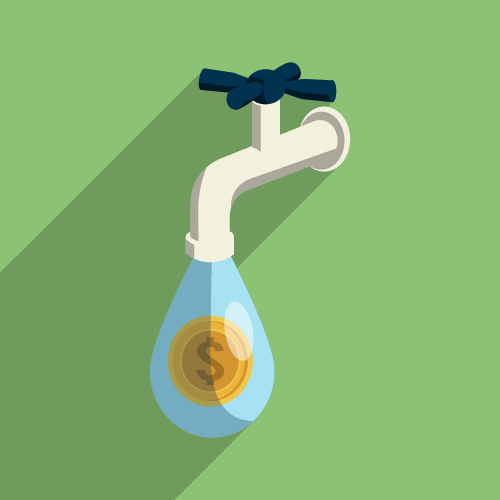Your new CMMS software is implemented and operational.
Everything’s humming. All systems are go, running on autopilot and in high gear.
At this point, you’re probably wondering:
What’s the best way to ensure facility management efforts are on track and – most importantly – equipment is up to all compliance standards?
If you have CMMS software, make sure you use focused and sophisticated reporting and analytics. You’re only as good as the information you effectively manage.
We’re confident you already figured this out before buying a system, but if you’re in the market for a new one, be sure the system provides you with comprehensive one-click reports. If your current CMMS doesn’t allow for this, it may be time to start looking for a replacement.
Your CMMS must provide you with an accurate breakdown of your work orders, preventive maintenance activities and tasks, fixed assets, materials, vendor information, and more…much, much more.
(If you’re reviewing CMMS solutions, click here to check out our 9 essential questions to ask when choosing CMMS software for your facility.)
9 Reports for Extracting the Most ROI from Your CMMS Software
Yes. You could develop a plethora of “useful” CMMS software reports – definitely more than 9 reports – to effectively oversee your operation. However, these 9 reports will give you what we believe is a superior picture of how your people, processes, equipment, and all materials are being utilized with your facility management efforts in mind.
Preventive Maintenance Report
A Preventive Maintenance Report allows you to see all of your preventive maintenance activities and tasks as they are sent, scheduled, received, or closed. You can examine all preventive maintenance activities by date range to analyze by date for a more comprehensive snapshot.
We recommend you don’t stop there:
Look further into your analytics and cluster your preventive maintenance by the department it’s assigned to, the person it’s assigned to, its associated activities, the associated facilities, the specific location of the activity, and equipment category, location, and vendor.
Work Order Report
A Work Order Report shows work orders as they’re created, scheduled, started, completed, or closed. Examine the work orders by a date range to further analyze by date.
Go even deeper in your analytics:
Group your work orders by the department the work order is assigned to, the person the work order is assigned to, by whom the work order was requested, the department requesting the work order, the type of work requested, the status of the work order, which one of your facilities the work order is associated with, and the specific location for the work order.
This is a powerful report that finally takes the cumbersomeness out of managing your work orders. Use this summary report to start really loving your CMMS.
Purchase Order Report
A Purchase Order Report shows purchase orders as they’re created, sent, scheduled, received, or closed. Examine purchase orders by a date range in order to dive deeper into specific dates.
It gets better:
Group your purchase orders by the department the purchase order is for, which one of your facilities the purchase order is for, what the priority is, the type of purchase order it is, who it was requested by, and the status of the purchase order.
(Pro tip: Many facilities tie purchase orders into their accounting software. However, this is a great report for managers who like to further scrutinize the information for next-level facility management. It’s that extra mile during your journey to peace of mind.)
Activities Report
An Activities Report will give you a comprehensive snapshot of maintenance activities, inclusive of the associated tasks, equipment, materials, labor, and estimated material and labor costs associated with each activity.
Simple, yet powerful.
Equipment History
An Equipment History report breaks down all equipment by work order, purchase order and preventive maintenance.
Analyze equipment use by each category as it’s:
- Created
- Scheduled
- Started
- Completed
- Closed
- Suspended
- Denied
There are many ways to see equipment the way you need to see it!
Labor Summary Report
Your Labor Summary Report is the next generation in management reporting. This is a holistic view of your maintenance efforts.
With it, you can:
View all associated labor by work order, purchase order and your preventive maintenance.
Examine each record by date and see each as they are created, scheduled, started, completed, closed, suspended, or denied.
Take a closer look at these analytics to exceed your current decision making capabilities and reap the benefits.
Now:
As a facility manager, you can see labor records by their associated facility, priority, and the department each item is assigned to or has even been requested by. Take it as far as the person it’s assigned to or requesting the work, purchase or maintenance activity.
Vendor Work History Report
Use a Vendor Work History report to manage your vendors and analyze their associated work orders and all related costs.
Vendor Purchase Order History Report
Use a Vendor Purchase Order History report to manage your vendors and analyze their associated purchase orders and all related costs.
(Pro tip: Use your Vendor Work History report and this report for optimal management of your maintenance-related partnerships.)
Vendor Insurance Report
A Vendor Insurance report lets you proactively oversee your vendors and the status of their insurance. This is a must-have report that’ll keep you compliant and always on track.
Use this to see whether their insurance is current or expired.
Fortunately, many of the modern maintenance systems will keep you aware of this information through the use of alerts and notifications.
Can You See the Signs of Enhanced Facility Management from Your Solution’s Data?
See your facility maintenance information the way you and your team need to see it.
The insights from the reports we shared with you above will give you the supplemental knowledge you need to increase your operational efficiency.
With all your understanding you can then:
- Take complete ownership of your maintenance and staffing resources. From scheduled preventive maintenance activities and tasks to labor usage, you’ll be in full control of your operation.
- Have continuous and long-term control over your maintenance budgets. Now work is planned and you can determine costs ahead of time while simultaneously measuring and fine-tuning resources.
- Reduce your equipment and material costs. Everything will be scheduled, and planned maintenance is better for business. When you know maintenance activities are approaching, the cost drops. You have less equipment and operational downtime than before you began taking advantage of these maintenance reports.
- Lower workplace stress and keep employee drive up. No more stress about barely getting by with equipment fixes and preventable replacements. Reports are driving the behavior of your team by getting prescheduled activities and tasks to them early. The result? A noticeable uptick in your facility’s overall efficiency and effectiveness…and YOUR peace of mind!
Your success as a facility manager can be measured at this point. How? You know where and how your resources are being allocated.
How’s that for peace of mind?
Over to You
We know there’s no question the benefits extend beyond the ones we listed above.
How do you plan to implement these types of reports so you can maximize your facility’s maintenance initiatives?




